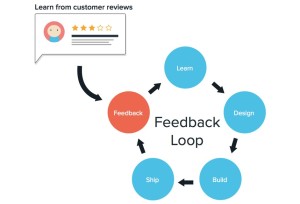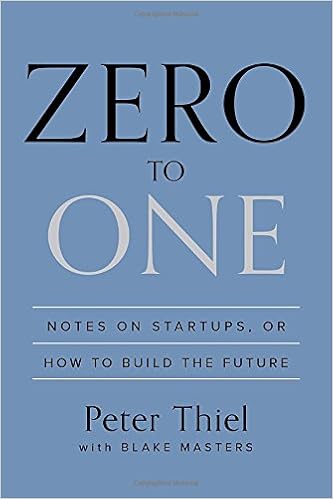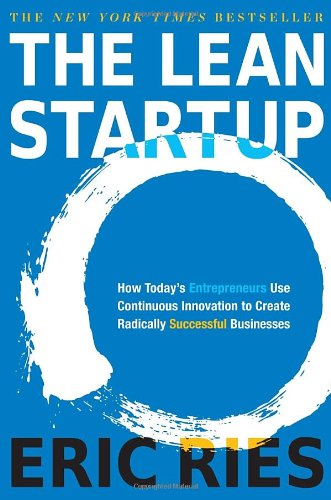What is a startup?
“A startup is a company working to solve a problem where the solution is not obvious and success is not guaranteed.”
And this is the definition of a startup. If you look closely, you can see we are not talking about making money, or generating revenue. We are building a startup to solve a problem *zip*.
Wrong reasons to start a startup.
- Money
There are plenty of ways to earn money. Be an investment banker or a real estate agent but don’t be an entrepreneur. - Be my own boss
Once you start, you will find out that the customers are your boss. You will have to toil harder than your job to meet the demands of the customers. - Fame
Be an actor, not an entrepreneur. - No other option left.
Don’t treat entrepreneurship as an option. It’s a very noble duty. You are solving a problem faced by the people.
So what is the correct reason?
“To solve a problem. To make this world a better place.”
Do I need a co-founder?
“My partners … taught me that in order to create wealth, I needed to pair up with people whose strengths compensated for my weaknesses.” – Kevin O’leary
It’s certain that you cannot possess all the knowledge of the world. A startup requires a diverse set of skills from Technology to Marketing to Business Development. It’s better to start with a co-founder with a complementary skill set. However, if you believe you have all the knowledge and want to start alone you might find trouble raising money because investors will be skeptical about the startup’s success- because you are alone!
Don’t be the ‘CEO, CTO, CMO, CFO of your startup’.
‘I have an idea, now what?’
Here are the 5 steps that will help in building your first startup:
Step 1: Articulate your Idea
Describe your idea to yourself. Begin by answering these questions:
– What is the problem you want to solve?
– Who experiences that problem?
– How do you want to solve that problem?
– Why is this a better solution?
For example:
” I want to solve the problem of food storage in the developing countries, nearly 40% of their harvest rots. This problem is experienced by people in rural areas where food storage infrastructure doesn’t exist. I want to solve that problem by providing village-scale food storage shelters that would give every village a way to store their harvest and protect it from rain and pests. This would be a better solution because:
– It would be easy and quick to install
– It would be simple to operate
– It would not require large investments in infrastructure
– It would last long
– Rural entrepreneurs could even earn money by selling this space for other purposes”.
Step 2: Who is your customer?
You will have to define for whom this startup is aimed at. Understanding your customers is the key to building products that your customers need. Your customers are the one:
– who experience a similar needs.
– to whom you could deliver your solution at a similar cost.
– who would buy it at a similar price?
I recommend following this course on EDX: Entrepreneurship 101: Who is your customer?
Step 3: Avoid Competition
Nothing is more lethal than a startup competing with an established player. Think about the numerous startups in e-commerce that have failed, all because they were competing against the incumbents like Flipkart, Amazon, and Snapdeal.
However, if you still wish to compete with them, make sure that your product is at least 10 times better. Think of Apple iPod vs. Every generic MP3 Player, why did Apple win?
Step 4: Go for monopoly
Monopolies are highly disregarded in our society. Our societies make them look evil because they can control the price and the product availability. However in the startup world, monopoly is required to sustain. Let me give you some examples of monopoly, and you figure out why they are still in business.
– Indian Railways
– Google Search
– Microsoft Windows OS
– Unilever
– WhatsApp
– Facebook – it owns WhatsApp
Step 5: Build your prototype.
Congratulations, you have successfully completed steps 1 to 4. Now it’s time to build your prototype.
A. Start by brainstorming. Throw every idea at the wall, including the crazy ones. Don’t worry about analyzing, and especially criticizing ideas. At this point, keep your aperture wide open. Identify potential industries for your ideas.

B. So you found out what and for whom you want to build. Now build, test, and Improve your MVP (Minimum Viable Product). Follow this feedback loop until you find what your customer actually need!

* MVP: A minimum viable product is a product with only the core features. It’s developing a fast and decent enough product to be released for the purpose of testing the market. Remember the first version of Flipkart? It was terrible, but it did the job of selling books.
The equity split.
You should bring this matter as early as possible with your co-founder, usually before you start brainstorming. I highly recommend that you start with equal equity. If you are two people then start with 50-50 equity irrespective of what the other person is bringing on the table. Starting with equal equity will lead to better work co-ordination and less feeling of ‘he is having the extra equity, why should I work on this’. And above all, the startup will not work if both of you don’t give your 100%.
Important: Always use vesting equity! With vesting equity you don’t give away a half of your company immediately, instead you give the equity in small chunks which add up to (say) 50% for the time period you agreed upon. If you don’t know what vesting is, take a look at the images below.

You can learn more about vesting equity here.
Here are the slides from my presentation:
Recommended Reading:




This blog one of the best blog i have ever seen